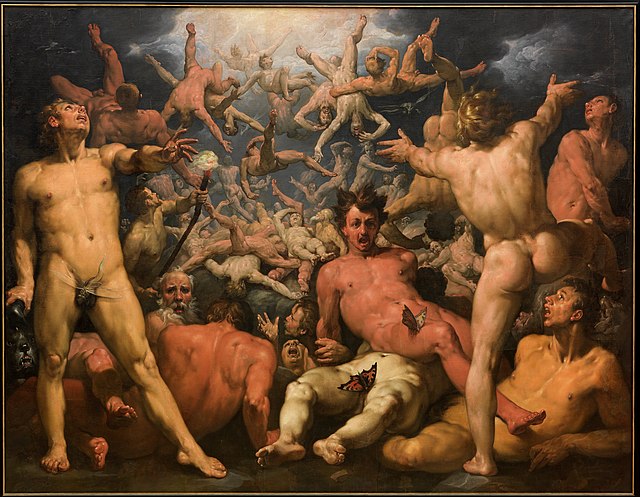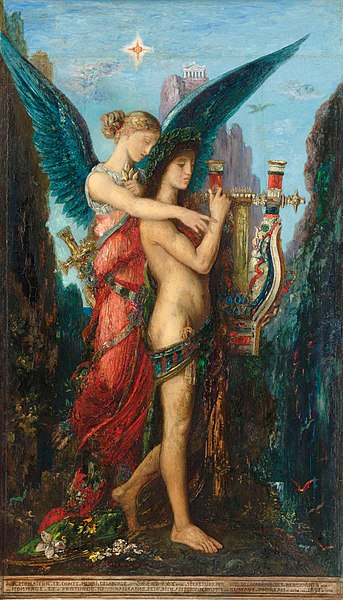The Theogony is a poem by Hesiod describing the origins and genealogies of the Greek gods, composed c. 730–700 BC. It is written in the Epic dialect of Ancient Greek and contains 1022 lines. It is one of the most important sources for the understanding of early Greek cosmology.
Fourteenth-century Greek manuscript of Hesiod's Theogony with scholia written in the margins
The nine muses on a Roman sarcophagus (second century AD)—Louvre, Paris
The Mutilation of Uranus by Saturn: fresco by Giorgio Vasari and Cristofano Gherardi, c. 1560(Sala di Cosimo I, Palazzo Vecchio)
The Fall of the Titans by Cornelis Cornelisz van Haarlem (1596–1598)
Hesiod was an ancient Greek poet generally thought to have been active between 750 and 650 BC, around the same time as Homer. He is generally regarded by Western authors as 'the first written poet in the Western tradition to regard himself as an individual persona with an active role to play in his subject.' Ancient authors credited Hesiod and Homer with establishing Greek religious customs. Modern scholars refer to him as a major source on Greek mythology, farming techniques, early economic thought, Archaic Greek astronomy, cosmology, and ancient time-keeping.
Hesiod
Hesiod and the Muse (1891), by Gustave Moreau. The poet is presented with a lyre, in contradiction to the account given by Hesiod himself in which the gift was a laurel staff.
The Dance of the Muses at Mount Helicon by Bertel Thorvaldsen (1807). Hesiod cites inspiration from the Muses while on Mount Helicon.
Modern Mount Helicon. Hesiod once described his nearby hometown, Ascra, as "cruel in winter, hard in summer, never pleasant."








